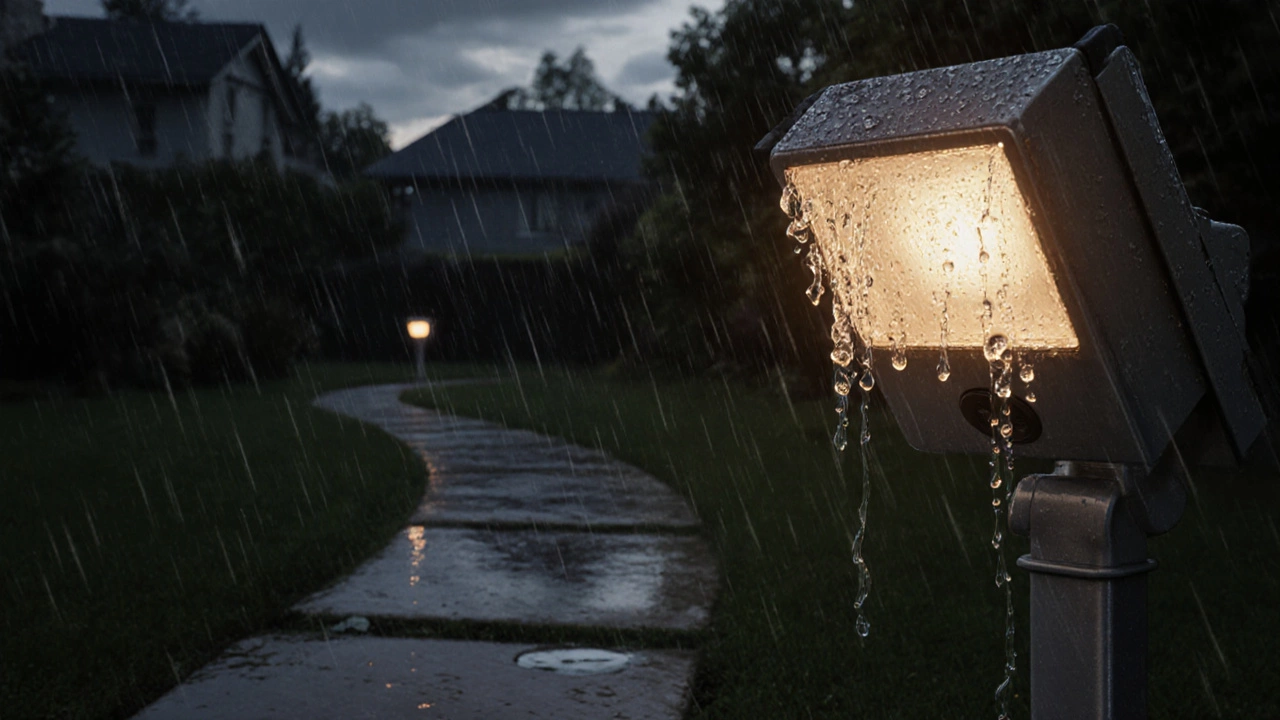When planning garden lighting, the practice of adding light fixtures to outdoor areas to improve safety, aesthetics, and enjoyment. Also known as outdoor illumination, it helps define pathways, highlight features, and deter unwanted visitors.
One of the first decisions is the outdoor light colors, the hue of a bulb that can either attract or repel insects. Research shows that warm‑white or amber LEDs keep bugs away, while bright white or blue tones draw them in. Pairing the right color with security lights, high‑intensity fixtures placed near doors, gates, and dark corners creates a two‑fold benefit: you boost night‑time visibility and send a clear signal that the area is monitored. A well‑placed security light reduces the chance of a break‑in and makes your garden feel safer after dark.
For larger spaces, floodlights, powerful broad‑beam lights that cover wide areas are essential. Floodlights influence the perceived safety of a garden by lighting up yards, patios, or driveways in a uniform glow. When you combine floodlights with lower‑profile pathway lights, you get layered illumination that guides guests without blinding them. The key is to keep the floodlight angle high enough to avoid glare while directing the light down onto the ground.
Start by mapping out the zones you want to light: entrances, walkways, seating areas, water features, and any hidden corners. For each zone, decide which type of fixture best serves the purpose. Pathways usually benefit from low‑profile LED strips or bollard lights that stay close to the ground. Seating zones thrive on softer uplights that highlight trees or sculptures without harsh shadows. Remember, the best garden lighting strategy garden lighting tips includes layering: ambient, task, and accent lighting working together.
Next, choose your power source. Solar‑powered fixtures are great for remote spots where running cables is tough, but they need direct sunlight to charge. For consistent performance, especially with security lights and floodlights, wired solutions backed by a timer or motion sensor are more reliable. Motion sensors are a smart addition – they keep lights off during the day, saving energy, and turn on instantly when movement is detected, adding an extra layer of deterrence.
When it comes to bulbs, stick with LED technology. LEDs last longer, use less energy, and are available in a spectrum of colors. If you’re battling mosquitoes, opt for bulbs labeled “bug‑free” or “insect‑repellent” – they typically emit a warm amber glow that keeps pests at bay. For decorative accents, color‑changing LEDs let you switch moods with a remote or smartphone app, adding flexibility for parties or seasonal décor.
Don’t forget about control systems. Modern garden lighting can be linked to smart home hubs, allowing you to set schedules, dim levels, and even react to weather conditions. For instance, you can program lights to dim automatically on cloudy nights or brighten during a sudden rainstorm to improve visibility. Integrating your lighting with security cameras also helps – illuminated areas provide clearer video footage, pairing safety with surveillance.
Installation height matters. For most security lights, mount them between 8‑10 feet to cover a wide radius without creating blind spots. Floodlights should be positioned higher, around 12‑15 feet, to spread light evenly across larger surfaces. Using the right mounting height prevents glare for neighbors and ensures compliance with any local lighting ordinances.
Finally, test your layout after installation. Walk the garden at night, checking for dark pockets, over‑lit spots, and glare. Adjust angles and heights as needed. A quick walk‑through will reveal whether your lighting guides guests safely, showcases key features, and keeps unwanted critters away.With these fundamentals in place, you’ll have a garden that looks great after dark, feels secure, and stays bug‑free. Below you’ll find a curated set of articles that dive deeper into each of these topics – from choosing the perfect outdoor light colors to mastering security‑focused floodlights. Keep reading to turn your garden into a night‑time haven.

Learn how to keep outdoor lights working through rain with IP ratings, sealants, proper wiring, and easy maintenance tips.